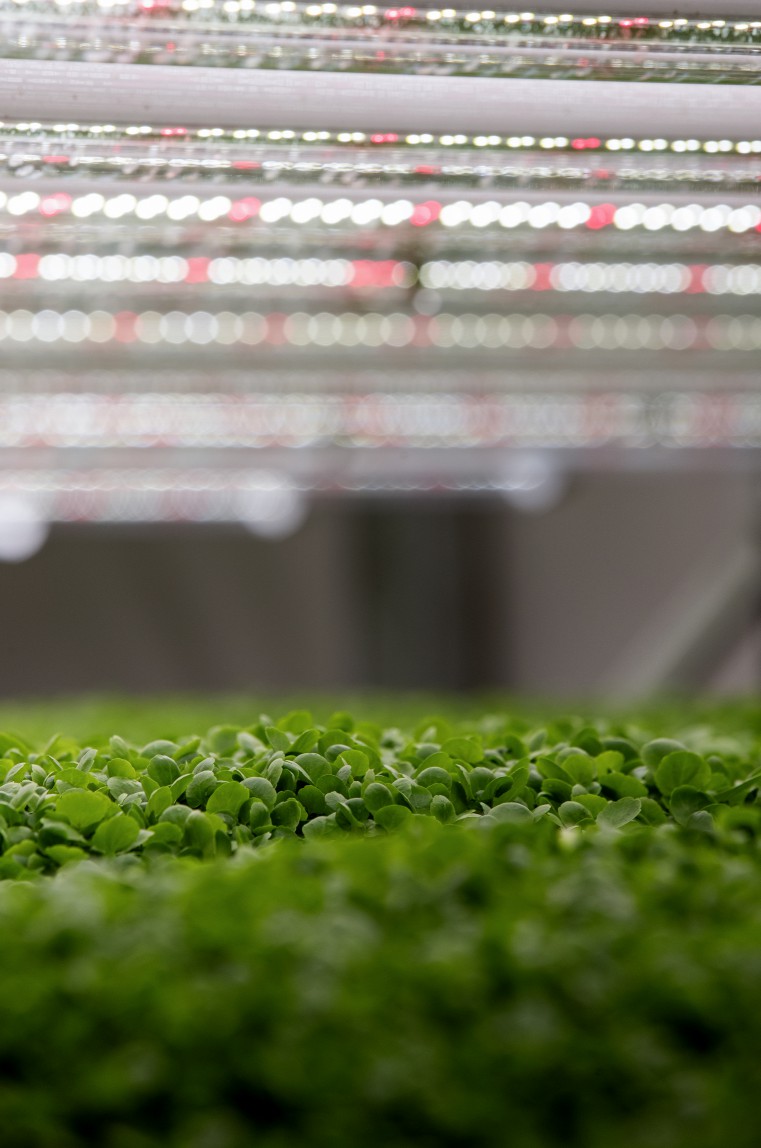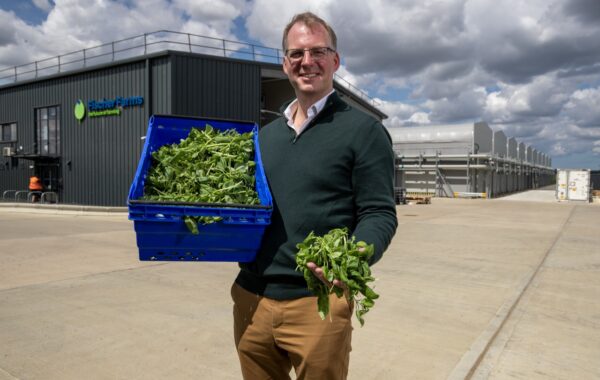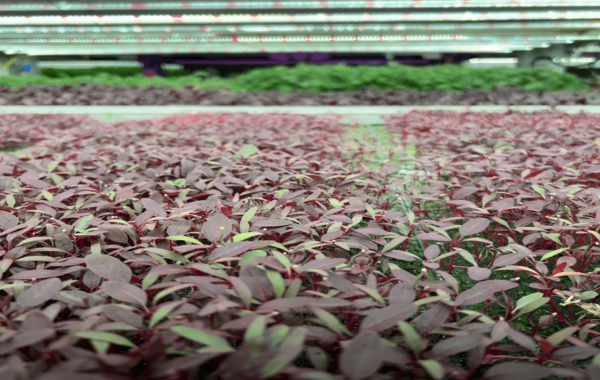
‘Did you know’…vertical farming has the potential to safeguard food security?
As food security becomes increasingly unstable, John Stapleton, Chairman of Fischer Farms, explains why vertical farming has the potential to bolster resilience against supply chain shocks, both in the UK and beyond.
Food security has been under increasing pressure for many years now. In the UK, we heavily rely on imports to feed our nation, as do many other countries and developing regions. But as the population continues to soar, and societal and environmental factors destabilise supply chains, we need to look at new ways of feeding the world to support traditional methods.
As a nation, we have become too reliant on other countries for out of season and staple food. From the fresh produce supplied from Spain and Italy to the wheat and grains grown in Russia and the Ukraine – the UK currently imports around 46% of our total food.
Extreme weather events and geopolitical conflicts mean that these sources are open to significant shocks that can rock the supply chain and inhibit our access to food sources. However, innovative food production techniques, like vertical farming, remove the reliance on ideal weather conditions, and enable countries to become self-sufficient.
Here we explore how vertical farming can counteract some of the biggest threats to food security:
Climate change
Growing produce like leafy greens and soft fruits requires a specific climate that the UK can only offer seasonally at best. This is why we have traditionally looked overseas for produce. However, as climate change continues to destabilise foreign growing capabilities, the countries we once relied on are becoming progressively unviable.
Take the food shortages we saw in the UK earlier this year. Floods in Italy and droughts in Spain hampered harvests across Europe, meaning our imported produce was suddenly unavailable, leaving supermarket shelves looking very sparse.
Vertically farmed produce, however, is grown completely independent of external weather conditions. At our new farm in Norfolk, for example, we have 19 individual growing tunnels that have a controlled environment of irrigation, light, nutrients, and temperature. The climate in each tunnel has been delicately optimised at 24C, 71% humidity and a breeze of half a metre per second. We have basically recreated a light spring afternoon on a Tuscan hillside – the perfect climate for growing delicious crops like basil. In fact, our process is so tightly controlled, we can predict exactly what crop will be available, and we can produce it 365-days a year, come rain or shine.
Feeding a growing population
The global population currently sits at 8.2bn and the size of the consumption-hungry middle class has reached around 2bn – the same as the total global population in 1950. Today, the world’s population is more than three times larger than it was in the mid-twentieth century. And it shows no signs of slowing down.
Populations across the world are growing at pace, with headcounts in countries like China, India and Africa rising rapidly. Africa, for example, has the highest rate of population growth, and it is projected to double by 2050, according to the United Nations.
As the global population continues to soar, traditional food production methods are becoming increasingly volatile. There has never been a greater need to find new ways of feeding the world.
Vertical farming can play a major role in addressing how we feed a growing population. Not only can the process produce yields 250 times greater than field grown crops, but it uses significantly less water than traditional farming methods, and is completely independent of weather conditions, meaning the infrastructure can be established in almost any country in the world, regardless of climate and soil quality.
At Fischer Farms, our ultimate goal is to feed the world with nutritional, high-calorie foods, and we have a three-phase plan to achieve this. Phase one, which is already underway in our production facility in Norwich, is leafy greens and herbs. Phase two is soft fruits, with trials underway at our R&D site in Lichfield. Phase three is calorific staples, such as rice and wheat and protein staples, such as peas and soya beans. These crops will support sustainable population growth.
As our technology continues to develop, and inputs costs, like energy, reduce, we believe that within the next decade we will have developed the capability to grow such crops, sustainably at scale, at price points that compare favourably to global commodity prices.
Vertical farming provides real hope for a more resilient and sustainable food supply chain. It is the future of farming.
Environmental issues
Traditional farming is under increasing pressure due to environmental strains, such as water scarcity. Agriculture is the largest using sectors of water and, according to the Food and Agricultural Organisation of the United Nations, it accounts for 70% of global freshwater withdrawals.
Today, 40% of farming in under water-stressed conditions and 25% uses water from underground aquifers, which scientists believe may be gone or no longer useable in about 20 years’ time.
These depleting natural resources set against the backdrop of a rapidly growing population, make the need to find less water intensive ways of feeding the world a vital task. Vertical farming can provide a sustainable alternative, using 95% less water than traditional farming. And unlike irrigated fields, which lose much of their water to the atmosphere, our vertical farming operations capture evaporated water and recycle it.
Geopolitical pressures
It has been a turbulent few years for wheat exports, with prices reaching a 10-year high following Russia’s invasion of the Ukraine.
With the two countries responsible for producing 95m tonnes of wheat each year – 23% of the world’s wheat exports – we are heavily reliant on these countries for staple produce. However, conflict has limited Ukraine’s export potential significantly, hindering availability and causing prices to skyrocket.
Becoming less reliant on countries for high-calorie staples, like rice, soy and wheat, would be a major step forward for food security, and vertically farming has the potential to achieve this.
We have already completed successful trials of vertically farmed wheat, with initial results showing a seed to harvest cycle capable of delivering five crop cycles per year. This means we can grow the equivalent of 273 acres of conventionally grown wheat, in a 10-acre vertical farm.
Significant capital investment is currently going to vertically farmed leafy greens and soft fruit. However, we have more ambitious plans, looking to scale up as quickly as infrastructure will allow, to deliver high protein crops such as wheat, soy and rice. This will require major R&D and billions of investment to deliver, but the returns will be considerable, leading to the next agricultural revolution, safeguarding global food security.
To find out more about Fischer Farms mission to safeguard food security, read our latest article in The Times.





